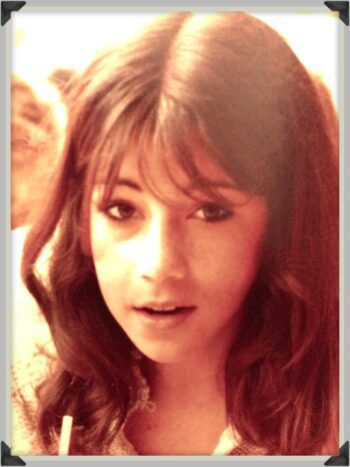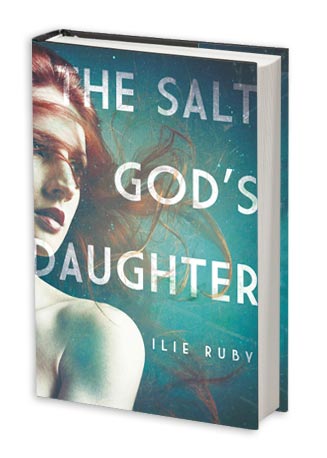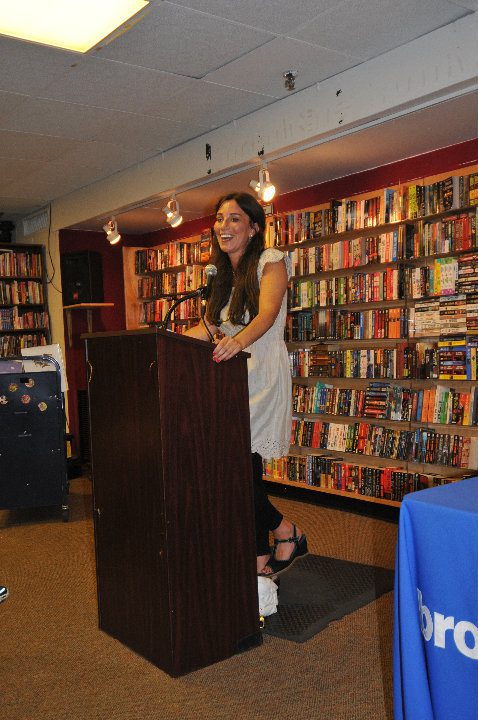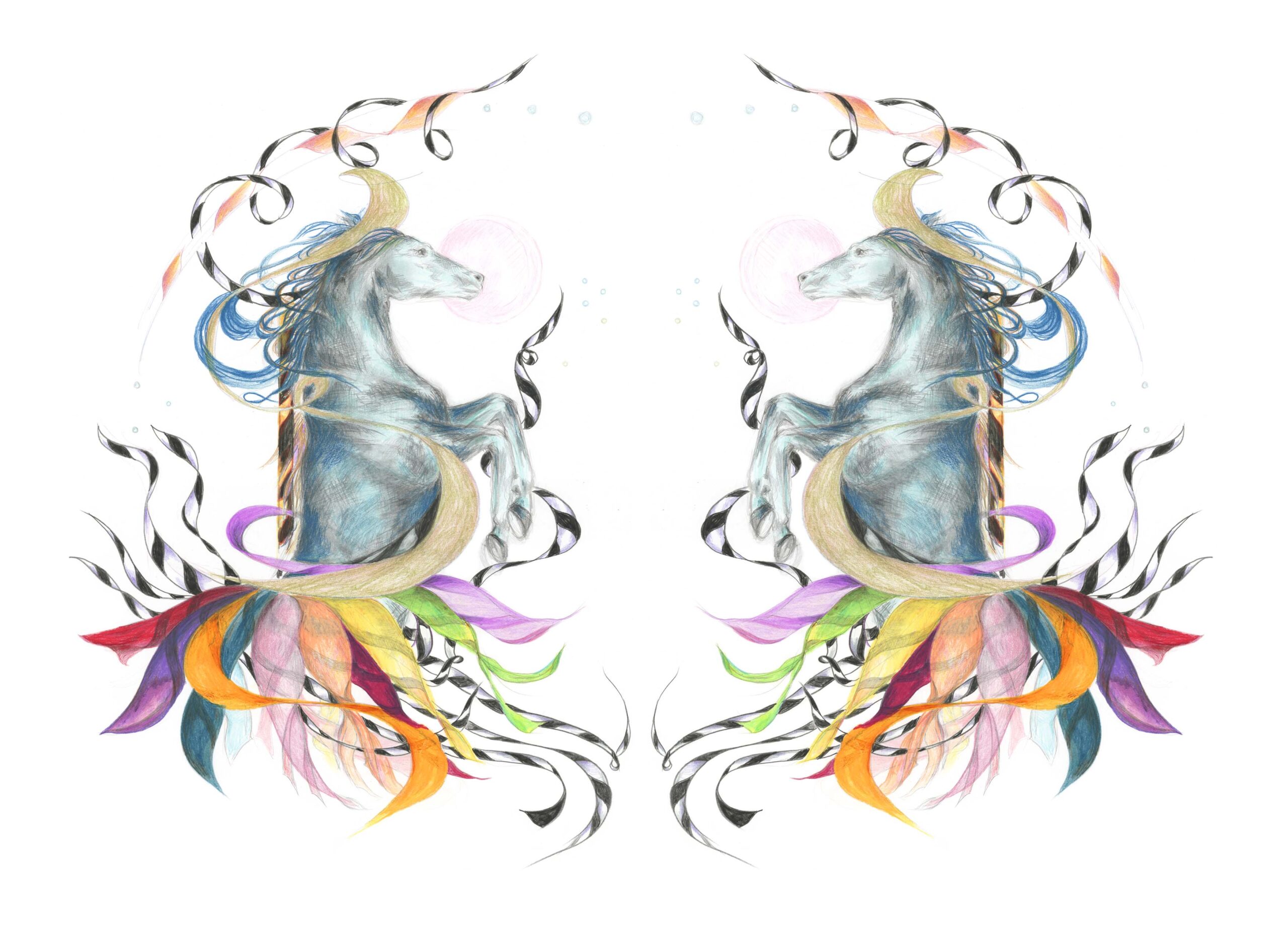
Certainly other readers have had this experience: you discover a book that is thrilling in its truth about the world, a book that captures your imagination so completely that you actually feel scared by the thought you might have never held this book in your hands; that you might have missed it completely. Ilie Ruby’s The Salt God’s Daughter is that kind of book. It is as stunning as an image by Joan Miró, as layered as one by René Magritte. That it invites comparison to visual art is lovely and right. In addition to her work as a novelist—her previous book is The Language of Trees—Ruby is a poet and painter. The women in The Salt God’s Daughter call themselves outlaws. And who better equipped than outlaws to teach us something about love and protection, identity and desire?
Set on the Southern California coast beginning in the 1970s, The Salt God’s Daughter is a story that belongs as much to Diana as to Naida, the granddaughter she may never meet. Diana drifts from campsite to campsite, job to job, raising two daughters, her station wagon their home. Diana teaches Dolly and Ruthie to carry backpacks she has filled with secondhand textbooks so that they will look to the rest of the world like normal, school-going children. By the time nomadic Diana surrenders to a more stable existence for her family, to living and working in a small hotel in the Belmont Shore section of Long Beach, Dolly and Ruthie have become secure in the role of outcast. Fiercely protective of one another and painfully familiar with uncertainty, they look to the ocean and seaside folklore to answer their questions. But the answers they want most may lie a generation away, with Naida, Ruthie’s daughter.
Naida is born with a webbed foot, a deformity that allows her to become as much an outcast as the women who came before her. She spends her childhood fighting off bullies and yearning for her father, a man who comes and goes like the tide. His brand of love is true but sporadic, as natural to Ruthie as it is confusing to Naida. Ruthie says, “Mostly I thought of him as something not possible. Each time he came back I was surprised…I wanted the taste of the salt he left on my skin, in my hair, that would take days to get out…I tracked storms. I evaluated tide charts and patterns of temperature and weather…I told myself he was not coming back. I waited for him…I knew the ending.” The rhythm of the ocean and patterns of the moon, in all their beauty, still fail to mask the cruelty of the world. The Salt God seems to possess the awareness of this sad but essential truth.
I suspect The Salt God’s Daughter will be recognized for its homage to Scottish sea lore and for its relationship to mystic Jewish traditions. Surely it can be discussed as modern-day myth or legend. But first it finds its success as a caring observation of the devotion between women, the complex but enduring bonds between daughter and mother.
I had the pleasure to interview Ilie Ruby in the days leading up to The Salt God’s Daughter’s release.
***
The Rumpus: You’ve described Long Beach with a stunning precision—the magical quality of the coastline and the gritty realism of the city. Long Beach is a seaside culture with great urban sprawl in its close vision; the home of gangs led by confusion—kids not quite destined to be city slickers but not entirely beach rats either. From Belmont Shore we travel the Southern California coast—north to Oxnard; south to San Clemente—with Diana, Dolly, and Ruthie, and later with Naida, so I’m interested to know more about your own relationship to this part of the world.
Ilie Ruby: I grew up on the East Coast but I’m a California girl at heart. When I was twenty-six, I left Boston for a job teaching fifth grade in Long Beach, CA—this was on the heels of the Rodney King riots, a racial hotbed, and my students were all second-language kids from tough backgrounds; the level of resiliency was just incredible. The situation was challenging and the experience was unforgettable. I didn’t know anyone in California, but I really adored these kids, and the condition of the urban surfer always fascinated me. Now, twenty years later, some are married, some have children and they seem to find me every so often (through the wonders of Facebook). I get to see how their lives have unfolded and all they’ve become. I wrote about a few of them in this novel.
While I was teaching and later attending a graduate writing program at the University of Southern California, I lived in a studio apartment across from the ocean in Belmont Shore, where The Salt God’s Daughter is set. What I remember most about the apartment was the Murphy bed that pulled out of the wall, and the stray cat that I named Tim, that used to hang by my door like a sentry. I was working crazy hours and writing every spare moment I could. Though I made one of my closest girlfriends there, this was a pretty solitary period. I think I felt a lot like the character of Ruthie, having that sense of moving across a landscape but not really being a part of it.
I remember looking out my window at all these oil rigs on islands in the ocean (the THUMS Islands). Again, there was something so surreal about this confluence of myth and real life. At night, I attended poetry readings and became involved in a burgeoning poetry community in Long Beach—folks who were publishing lit mags and nurturing young writers in the ’90s. I eventually moved to L.A. and did well there. Needless to say, I moved back east for a boy who I was wildly in love with. One day, I’ll move back. I’ll always be a little infatuated with California, with the sight of a line of palm trees at dusk, the polar opposite of the snow belt where I grew up.
Rumpus: Diana establishes a world for her daughters in which the almanacs she constantly consults represent hope. In this way, the almanac becomes a sort of holy book. Later, Ruthie will uncover her mother’s worn out almanacs in an attic where they have been tucked away like a family treasure. They become a guiding force and a relic. I’m fascinated by the role of the almanacs in the story, as well as the way Diana takes some editorial license with them. She changes the Snow Moon to the Hunger Moon. She writes in the margins. Can you say something about the role the almanacs as you created the story—how they contributed to the forward momentum of the work?
Ruby: I’m drawn to almanacs, to all things related to calendars, symbols, and the metaphysical. Before I became a teacher, I worked for PBS in Honduras and Guatemala. There, I learned a great deal about archaeology and the Maya civilization, which utilized what some believe was a predictive calendar system.
This became the world of my character, Diana. Because the almanacs provided a seemingly logical method for living comfortably in the cosmos, Diana latches on to them. The moon and its monthly incarnations provided a natural framework for the story. I loved the idea of Diana holding on to this “map” and her subjective interpretations as she searches for love throughout Southern California.
My own mother, an artist, used to take my sister and I camping every summer. We had no money and we slept in the back of her green station wagon, which I refer to as “Big Ugly” in the novel. Our summers were filled with exciting “adventures” as she liked to call them. There were always maps being passed around in the car, always in a state of unfolding.
Rumpus: A good deal of fiction lately discusses motherhood and sisterhood, but your work pushes more deeply into the dreams and confines of daughterhood. I’m so interested in this and in the way Diana’s intensity, whether Diana is physically absent or present, remains a relentless, driving, and defining force in her daughters’ lives. Was this unflinching portrayal of daughterhood an early goal of the novel, or something that emerged as you worked?
Ruby: Daughterhood was intentional, absolutely. I don’t think you ever lose the sense of yourself as both a daughter and a mother. I became more interested in daughterhood when I became a mother. Having a daughter in the throes of adolescence brings it all to the forefront—you’re forced to think about all of your own experiences as you try to guide your child through a very complicated labyrinth. Though my own mother is still alive, I lost her early—it’s something that I think I’ll always be exploring.
This is what Ruthie and Dolly experience, and yet of course, they love Diana fiercely. She is their guiding force—her psyche becomes their map, in a way. And as dysfunctional as she is, she is tapped into something wholly ethereal and wild. I wanted to explore the cycle fully, that of the daughter who becomes a mother. What was interesting to me was how Ruthie understands her daughter’s need to pull away and define herself, and yet it doesn’t make it easier. Daughterhood and motherhood are so vastly different, yet both can be incredibly beautiful, difficult, and bittersweet.
Rumpus: I love the descriptions of Ruthie learning to paint, the way we see her grow as an artist. She would study paintings in art books, examine hues, search for patterns and repetitions. Is Ruthie’s training in painting similar at all to your own? I admire the motion in your paintings (and we’ve included an image of one of your works here). Motion occurs even in the flower paintings, which are anything but still life. I wonder which came to you first, painting or writing?
Ruby: I’m not sure which came first, to be honest. Ruthie’s training was a little more intentional. I’m sure I had a paintbrush in my hand long before I learned to walk. I just sort of learned a reverence for it, painting and writing were normal activities in the day, and then they became a necessity, a touchstone when childhood became very non-idyllic. But in the early years, we learned about patterns and colors through nature—we’d pack up art supplies and go paint in the woods, on the beach, even outside with kerosene lamps under the stars. We painted with crushed berries and twigs and sand. It was all there—technique, color theory, perspective, design. I trained more traditionally years later. My mother was not a writer, though my dad loved to tell stories. I probably needed this way of defining myself creatively. Journals and stories were my safe haven. I wrote with abandon, filling up drawers with spiral notebooks, and then these eventually became epic, books filled with mysterious worlds that encompassed new universes and new families with their own adventures. To this day, I find such enjoyment in the creative process. Maybe that’s what you’re picking up on in the paintings—a real love for stories, and all the forms that can take.
***
Water Horse Dancing, colored pencil and pastel, was inspired by a horse that my husband and I came upon one day during a bike ride. As we watched from behind a fence, this horse began to gallop around its stable, possessing such joy and freedom that both of us were absolutely stilled watching it. I came home and drew this, trying to capture the energy of what we had just witnessed and felt. The reflection of the horses represents the duel sides of existence, yin and yang, good and bad, and life and death. Horses in The Salt God’s Daughter are mythic—waterhorses, in particular, represent the wild spirit of the ocean and our desire to tame it. – IR







